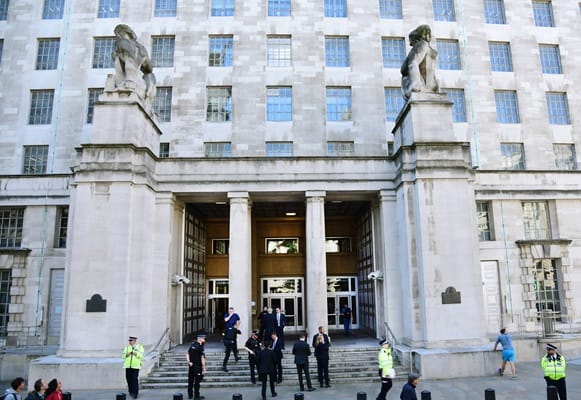London’s commercial real estate market is experiencing a remarkable transformation, with sustainability emerging as a crucial driver of property valuation. Recent studies reveal that green-rated buildings now command a significant premium in both rental rates and sales prices—up to 12.3% higher rents for buildings with the highest green ratings in prime Central London and an 8-18% sales price premium for green-certified properties compared to non-certified equivalents. This shift represents more than just a passing trend; it signals a fundamental revaluation of commercial assets based on environmental credentials.
For Nick Millican, CEO of property development firm Greycoat, this evolution comes as no surprise. “Environmental performance classifications, which were once of minor concern to most tenants, have now become crucially important,” explains Millican, whose company has been strategically positioned at the forefront of sustainable real estate development in London. Under his leadership, Greycoat has embraced sustainability not as an optional extra but as a core component of their business strategy, anticipating the market shift that is now becoming increasingly evident.
The emergence of a two-tier market
The growing premium for sustainable properties reflects a broader bifurcation in London’s commercial real estate market. “It’s becoming a two-tier market,” Millican observes. “There’s good buildings in desirable locations with modern environmental performance that are doing very well, and rents are actually going up. Then there are properties that aren’t really fit for purpose and are in the wrong location that probably needs to be repurposed into something else.”
This assessment aligns with recent market analysis, which shows an increasing rental premium for newbuild, energy-efficient office stock compared to older, less energy-efficient properties. Between 2014 and 2020, rental growth for both prime and secondary Central Business District (CBD) offices followed similar trajectories. However, since then, this relationship has diverged significantly, with prime rents growing by 11.8% compared to just 4.8% for secondary properties.
The gap is particularly pronounced in London, where the City of London has seen an 18% increase in the gap between prime and secondary rental growth in the past four years, while London’s West End has experienced an even more dramatic 32% increase. These differentials are largely attributed to stricter regulations on energy performance certificates (EPCs) that have restricted occupiers from leasing secondary office stock.
From green premium to brown discount
Looking ahead, industry experts suggest that as top ESG credentials become the norm, the market dynamic will shift from a “green premium” to a “brown discount,” where buildings failing to meet certain sustainability standards will be rented or traded at lower-than-expected rates, ultimately risking obsolescence.
Millican has been preparing Greycoat for this transition, focusing on retrofitting existing buildings to meet and exceed modern environmental standards. “It’s extremely hard to demolish a building and then use what you’ve taken to then build a new building,” says Millican. “It’s not really practical. So the more you can retain, the better the carbon footprint of what you’re doing.”
This approach aligns with emerging evidence from the retrofit market. A study of 130 retrofitted and refurbished offices across the UK that improved from EPC C-ratings and below to EPC B-ratings and above found that, on average, these properties saw the rental gap relative to prime close by 18%. This demonstrates the tangible value created by sustainability-focused renovations.
Sustainability as a core business strategy
For Greycoat, sustainability isn’t just about meeting regulatory requirements or responding to market pressures—it’s about creating long-term value. Under Millican’s leadership, the company has developed a comprehensive environmental impact strategy with a focus on reducing embodied carbon and operational energy.
“For each new project we begin, carbon budgets are treated with the same level of rigor and importance as financial analyses or cost plans,” Millican explains. This integrated approach ensures that every design decision is evaluated through the lens of long-term sustainability and carbon reduction.
The company’s focus on refurbishment over demolition is a key component of this strategy. By preserving as much of a building’s structural frame as possible, Greycoat significantly reduces the carbon footprint of its projects. This approach not only aligns with current market trends but also anticipates future regulatory requirements, as local planning authorities in London increasingly require substantial justification for demolition.
“I think we’ll see over time more and more focus on retention and refurbishment rather than demolition and rebuild,” Millican predicts, a forecast that aligns with the industry’s growing recognition of the value embedded in existing structures.
Financing green developments
The financial landscape for sustainable real estate is also evolving rapidly, with green finance innovations playing an increasingly important role. Sustainability-linked loans have emerged as an important financing mechanism in London’s real estate market, with interest rates linked to meeting agreed sustainability goals.
The financial sector’s commitment to sustainability is growing rapidly, with tracked UK financial institutions almost tripling their investment into clean-energy projects in just one year, reaching USD 2.3 billion in 2023. Meanwhile, climate-related risks are increasingly influencing investment decision-making, with 82% of investors surveyed expressing concern about the impact of climate-related risks on their portfolios.
These shifts are reshaping lending practices in the commercial property sector, with lenders becoming more selective and prioritizing prime assets and properties that are either ESG-compliant or have a clear “roadmap to compliance.” This selective approach to lending reinforces the market advantage of sustainable properties and creates additional incentives for property owners to improve their sustainability credentials.
For Greycoat, this changing financial landscape presents both challenges and opportunities. “I think there’s more of a need to invest in buildings now than there has been historically, because of the environmental regulations here changing. And so people are kind of forced to make their buildings more energy-efficient,” notes Millican.
DIALS: A case study in sustainable investment
Greycoat’s approach to sustainability is exemplified by its work on DIALS, a 6-story office building in the City of London acquired in partnership with Goldman Sachs Asset Management in December 2023. This ambitious project goes beyond mere cosmetic improvements, targeting the comprehensive overhaul of the building’s infrastructure to elevate it to the highest standards of environmental sustainability.
“Our vision for DIALS goes beyond a mere property acquisition,” says Millican. “We are embarking on a journey to transform this 140,000 sq ft space into a beacon of innovation and sustainability. Our approach is not just about being at the forefront of design, but about pushing the boundaries of what is possible in sustainable development.”
The design strategy for DIALS incorporates a full renovation that retains the building’s structural and aesthetic integrity while integrating state-of-the-art sustainable technologies. This includes upgrading heating, ventilation, and air conditioning systems to energy-efficient models, implementing advanced water conservation practices, and using sustainable materials in all construction retrofitting.
Millican has set ambitious environmental certification goals for the project: “Our goal is to achieve BREEAM Outstanding, EPC A, and WELL Platinum ratings for DIALS. These certifications are not just badges of honor—they signify our commitment to setting benchmarks in sustainable building practices that prioritize both environmental impact and occupant health.”
Strategic positioning for the future
Greycoat’s strategic focus on sustainability positioning the company for future success in a market increasingly shaped by environmental considerations. As London works toward its ambitious target of becoming a net-zero city by 2030—a goal that will require massive infrastructure investment estimated at £75 billion by 2030 and up to £108 billion by 2050—companies like Greycoat that have already embraced sustainable practices are well-positioned to thrive.
The commercial property sector is responding to these challenges with various approaches to implementation. Investors are increasingly setting net-zero emissions targets for their portfolios, pledging to manage portfolios in ways that achieve zero greenhouse gas emissions by specific dates. Most investor targets align with the Paris Climate Agreement, aiming for 50% emissions reductions by 2030 (compared to 2018 baseline levels) and 100% by 2050.
By focusing on refurbishing existing buildings to high environmental standards, Greycoat is not only reducing the carbon footprint of its projects but also creating assets that will command premium rents and maintain their value over time. This approach aligns with the broader shift in the market, where the environmental performance of a building is increasingly seen as a critical factor in its long-term viability.
“The environmental performance of a project is increasingly important to occupiers, to lenders, to the investor that we’ll inevitably end up selling the building to, once it’s all complete,” notes Millican. “It’s all part of the rich mix of things that goes into establishing what is best in class.”
As London’s real estate market continues to evolve, with sustainability becoming an increasingly central driver of value, Nick Millican’s forward-thinking approach at Greycoat positions the company to not only respond to current market trends but to help shape the future of sustainable development in one of the world’s most dynamic property markets.








